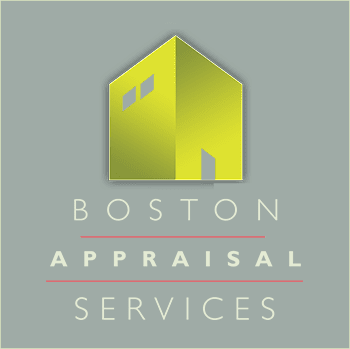The Impact of Short-Term Rentals on Real Estate Appraisal: How to Appraise Airbnb and VRBO Properties
Categories: Real Estate Appraisal, Real Estate Tips
Short-term rentals, such as Airbnb and VRBO, are a growing segment of the hospitality industry, and they have had a significant impact on the real estate market. These properties offer travelers an alternative to hotels, with more flexibility, privacy, and variety. They also provide homeowners and hosts with an opportunity to earn extra income from their unused or underutilized spaces.
However, appraising these properties can be challenging, as they require a different approach than traditional residential or commercial properties. Unlike long-term rentals, short-term rentals are subject to fluctuations in demand, occupancy, and rental rates, and depend on the season, location, and amenities. They also face legal, regulatory, tax, insurance, and maintenance issues that may affect their value and profitability.
In this article, we will explore some of the factors that appraisers consider when valuing short-term rentals, and some of the resources and methods that they use to obtain reliable and accurate data and comparables.
Highest and Best Use
One of the first steps in appraising any property is to determine its highest and best use, which is defined as the most probable use of the property that is legally permissible, physically possible, financially feasible, and maximally productive. For short-term rentals, the highest and best use may differ from the subject property’s current use or zoning, as some properties may have been converted or adapted for short term rentals.
For example, a single-family home that is used as a short-term rental may have a higher value as a commercial property than as a residential property, depending on the market conditions and the income potential of the property. Conversely, a commercial property that is used as a short-term rental may have a lower value than as a traditional commercial property, if the short-term rental use is not permitted by the zoning or the lease agreement.
Appraisers analyze the legal, physical, and economic factors that affect the highest and best use of the property, and then compare the value of the property under different scenarios. They also consider the possibility of a change in use or a reversion to the original use, and how that would affect the value of the property.
Income Potential
Another important factor in appraising short-term rentals is the income potential of the property, which may depend on the location, demand, occupancy, seasonality, amenities, and management of the short-term rental. Unlike long-term rentals, short-term rentals can generate higher or lower incomes depending on these factors, and they may also have higher or lower expenses.
Appraisers analyze the historical and projected income and expenses of the property, as well as the market rates and trends for similar short-term rentals in the area. They also consider the occupancy rate, which is the percentage of time that the property is rented out, and the vacancy rate, which is the percentage of time that the property is not rented out. These rates may vary depending on the season, the popularity of the destination, the competition, and the marketing of the property.
One of the methods that appraisers use to estimate the value of a property is the income approach, which is based on the principle that the value of a property is equal to the present value of the future income that it can generate. This method involves estimating the net operating income (NOI) of the property, which is the gross income minus the operating expenses, and applying a capitalization rate (CAP rate), which is the rate of return that an investor would expect from the property, to obtain the value of the property.
The formula for the income approach is: Value=NOICAPrate
To calculate the NOI, appraisers obtain the gross income and the operating expenses of the property. The gross income is the total amount of money that the property earns from renting out the space, and it may include other sources of income, such as fees, tips, or commissions. The operating expenses are the total amount of money that the property spends on maintaining and operating the space, and they include costs such as utilities, taxes, insurance, repairs, maintenance, and management.
To calculate the CAP rate, appraisers use several methods and sources. Primarily, they develop the Band of Investments. They also look at investor surveys and try to extract the CAP rate from the market. The Market Extraction method compares the NOI of the subject property with the sales prices of similar properties that have been sold in the market. The CAP rate is the ratio of the NOI to the sales price, and it reflects the risk and return of the investment. The higher the CAP rate, the higher the risk and the lower the value of the property. The lower the CAP rate, the lower the risk and the higher the value of the property.
The formula for the CAP rate is: CAPrate=NOISalesprice
Appraisers use multiple sources and methods to gather and verify the income and expense data, as well as the sales data, for the property and the comparables. They also adjust the data for any differences in size, condition, location, amenities, or other factors that may affect the value of the property.
Risks and Challenges
Another factor that appraisers consider when valuing short-term rentals is the risks and challenges associated with this type of use, such as legal, regulatory, tax, insurance, and maintenance issues. These factors may affect the value and profitability of the property, as well as the feasibility and desirability of the use.
Some of the legal and regulatory issues that short-term rentals may face are:
- Zoning and land use restrictions, which may prohibit or limit the use of the property as a short-term rental, or require special permits, licenses, or approvals.
- Lease and mortgage agreements, which may prohibit or restrict the use of the property as a short-term rental, or require the consent of the landlord or the lender.
- Homeowners association (HOA) rules and regulations, which may prohibit or regulate the use of the property as a short-term rental, or impose fees, fines, or penalties for violations.
- Local, state, and federal laws and regulations, which may impose taxes, fees, or other obligations on the short-term rental activity, such as income tax, sales tax, occupancy tax, or registration requirements.
Some of the tax and insurance issues that short-term rentals may face are:
- Tax implications, which may vary depending on the type, frequency, and duration of the short-term rental activity, and the classification of the property as a personal residence, a rental property, or a business property. Short-term rentals may be subject to different tax rules and rates than long-term rentals, and they may also affect the eligibility for tax deductions, credits, or exemptions.
- Insurance coverage, which may not cover the short-term rental use of the property, or may require additional or specialized policies, such as commercial, liability, or umbrella insurance coverage. Short-term rentals may also increase the risk of damage, theft, or liability claims, which may affect the premiums, deductibles, or exclusions of the insurance.
Some of the maintenance and management issues that short-term rentals may face are:
- Maintenance and repair costs, which may be higher or more frequent than long-term rentals, due to the wear and tear, damage, or vandalism caused by the guests, or the need to comply with the standards and expectations of the platforms, the guests, or the regulators.
- Management and operation costs, which may include the time, effort, and money spent on marketing, booking, communicating, hosting, cleaning, and servicing the guests, or hiring a professional or a third-party service to do so. These costs may also depend on the level of involvement, control, and quality of the host or the service provider.
Appraisers adjust the value of the property to reflect these risks and challenges, as well as the uncertainty and volatility of the short-term rental market. They consider the potential benefits and opportunities that short-term rentals may offer, such as higher income, diversification, flexibility, and personal use.
Data and Comparables
Another factor that appraisers consider when valuing short-term rentals is the availability and reliability of data and comparables for this type of use, which may be limited or inconsistent. Appraisers may need to use multiple sources and methods to gather and verify the information, such as online platforms, local agencies, industry reports, and surveys.
Some of the sources and methods that appraisers use to obtain data and comparables for short-term rentals are:
- Online platforms, such as Airbnb and VRBO, which provide information on the listings, rates, occupancy, reviews, and ratings of short-term rentals in the area. However, these platforms may not disclose the actual income and expenses of the hosts, or the rental amounts of the properties. They may also have different criteria, standards, and algorithms for displaying and ranking the listings, which may affect the accuracy and comparability of the data.
- Local agencies, such as tax assessors, recorders, or tourism bureaus, which may provide information on the sales, assessments, taxes, permits, or registrations of short-term rentals in the area. However, these agencies may not have complete or updated records of the short-term rental activity, or they may have different definitions, classifications, or reporting requirements for this type of use.
- Industry reports, such as market studies, surveys, or analyses, which may provide information on the trends, statistics, or forecasts of the short-term rental market in the area or the region. However, these reports may not be specific or relevant to the property or the comparables, or they may have different sources, methods, or assumptions for collecting and presenting the data.
- Surveys, such as interviews, questionnaires, or inspections, which may provide information on the characteristics, income, expenses, or opinions of the hosts, guests, or neighbors of the short-term rentals in the area. However, these surveys may not be representative or representative of the population, or they may have biases, errors, or inconsistencies in the responses.
Appraisers use caution and judgment when using these sources and methods, and they cross-check and corroborate the data and comparables from different sources and using different methods. They also adjust the data and comparables for any differences in size, condition, location, amenities, or other factors that may affect the value of the property.
Conclusion
Appraisers consider the highest and best use, the income potential, the risks and challenges, and the data and comparables of the property, and they use multiple sources and methods to obtain reliable and accurate information. They also keep abreast of the latest trends, developments, and regulations of the short-term rental market. Short-term rentals are a dynamic and complex segment of the real estate market, and they pose unique challenges and opportunities for appraisers. Valuing these types of properties requires extensive experience and expertise.
For additional information and market insights, please visit www.bostonappraisal.com or call our offices.





Leave a Reply
Want to join the discussion?Feel free to contribute!